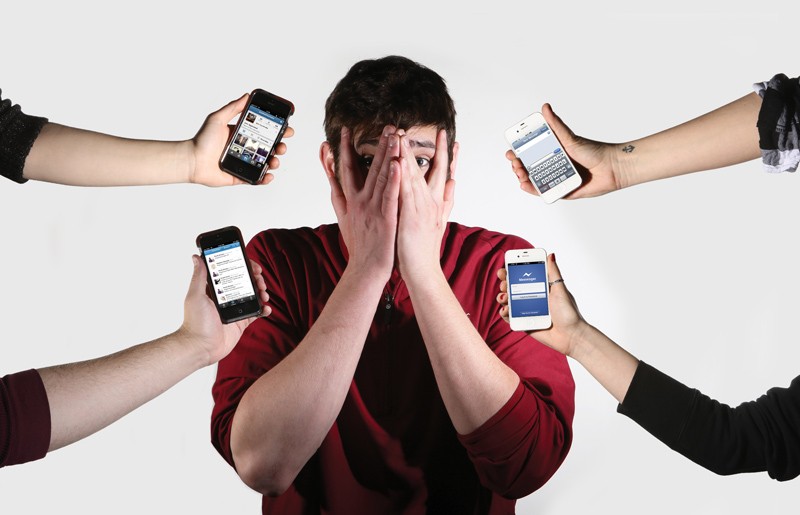Editorial: Social media brings conflict, misinformation close to home

GVL Archives
Feb 28, 2022
One week ago, the average student at Grand Valley State University may have seen the occasional meme about World War III or read a headline or two on the Russia-Ukraine crisis. Now, conversation about Russia’s invasion of Ukraine is pervading classrooms and dinner tables, and social media platforms are choked with real-time footage of the invasion and a plurality of hot-takes.
As peace talks on the Ukrainian-Belarusian border are authorized by President Volodymyr Zelensky of Ukraine and President Vladimir Putin of Russia, and the world sees its first legitimate hope of de-escalation, GVSU students – and college students across the country – are coming down from a borderline-hysteric week-long period of existential crisis.
Social media, like Twitter and TikTok, brought a conflict an ocean away, that has a very small chance of actual U.S. military involvement, into the front of college students’ minds. While international awareness is a desirable trait in 21st-century global citizens, the means of this kind of connection are fraught with problems.
It became clear that misinformation and footage about the invasion were challenging to parse from falsified or misleading content; video from old military crises was recycled, and realistic footage from the video game Arma 3 was framed as real-time documentation of the war.
YouTube, TikTok and Twitter also became entangled in Russia’s efforts to spread disinformation about the crisis-turned-war, as a state-sponsored outlet— “RT” — posted misleading videos, defending Russia’s attack and deflecting attention, to the platforms.
Innocuous, misguided rumors worked in conjunction with strategically drafted propaganda – against a backdrop of accurate news from trustworthy sources – generated a chaotic field of confusion among social media users.
Profiles and pages were granted momentary legitimacy, as desperation for up-to-date information overtook skepticism. Generation Z’s heated, artificial intimacy with the topic undermined the level-headedness that students could use to vet the breaking news being presented to them.
Social media users took on the roles of commentators and observation-makers, in addition to producing and consuming the news. Some shared ways to help and commentary on who people should help in addition to spreading awareness; others commented on the commentary, criticizing hot-takes, accusing people of superficiality and insincerity.
In the face of an inarguably important global crisis, one which will – in one way or another– inevitably touch the lives of Americans, students were saddled with uncertainty, panic or ironic detachment, fueled by the culture of the 24-hour news cycle and the decentralized authority of social media.
The GVSU community, alongside other colleges in the U.S., has been presented with the daunting challenge of balancing a passion and empathy for distant peoples with a truth-centered, scholarly approach to learning and watching.
College students have organized to hold protests against Russia’s despotic attack on Ukraine’s sovereignty and its people. This week, GVSU will host a conversation on “Russia, Ukraine and American Democracy.” While these events, resources and information are available to students, it’s up to them to increase their media literacy and carry what they learn into their online conversations.
As the war continues, and optimistically begins to de-escalate as peace talks and international aid commence, students must navigate their maze-like social media platforms and work to develop concrete understandings before they take meaningful action.






















